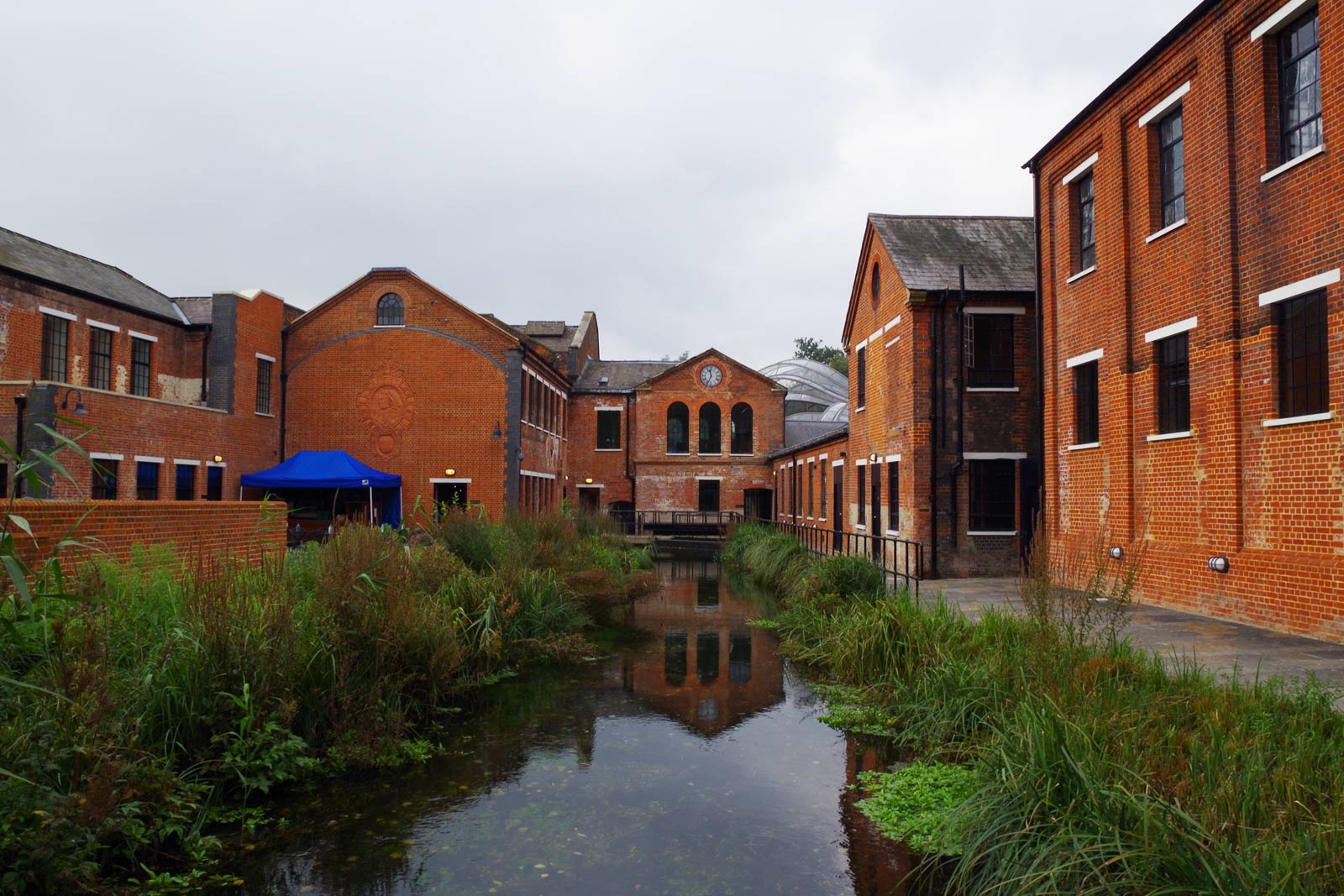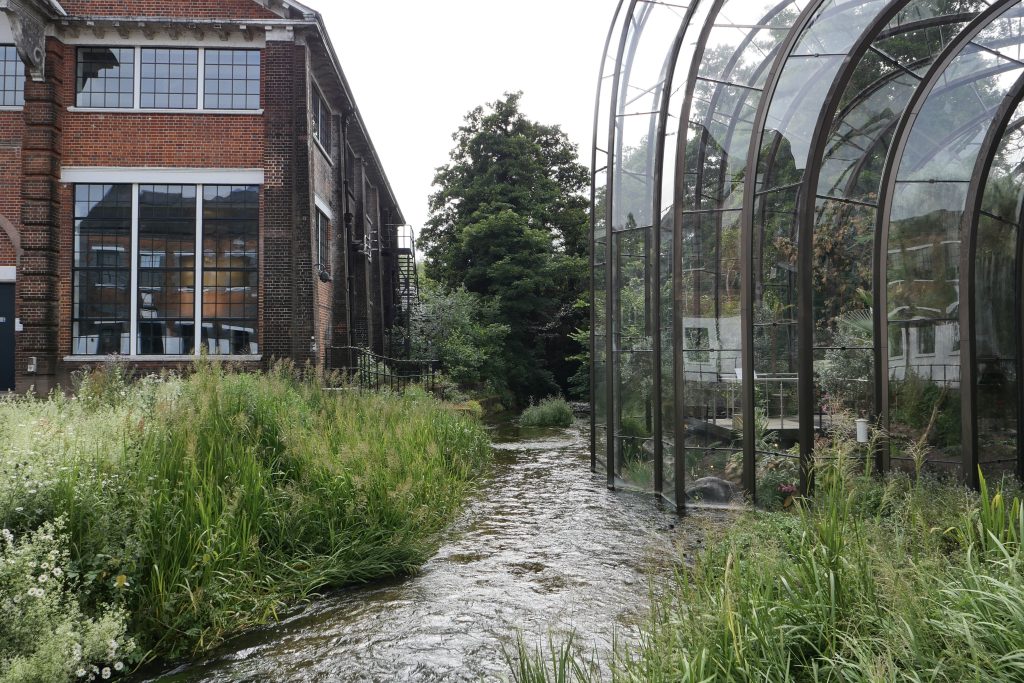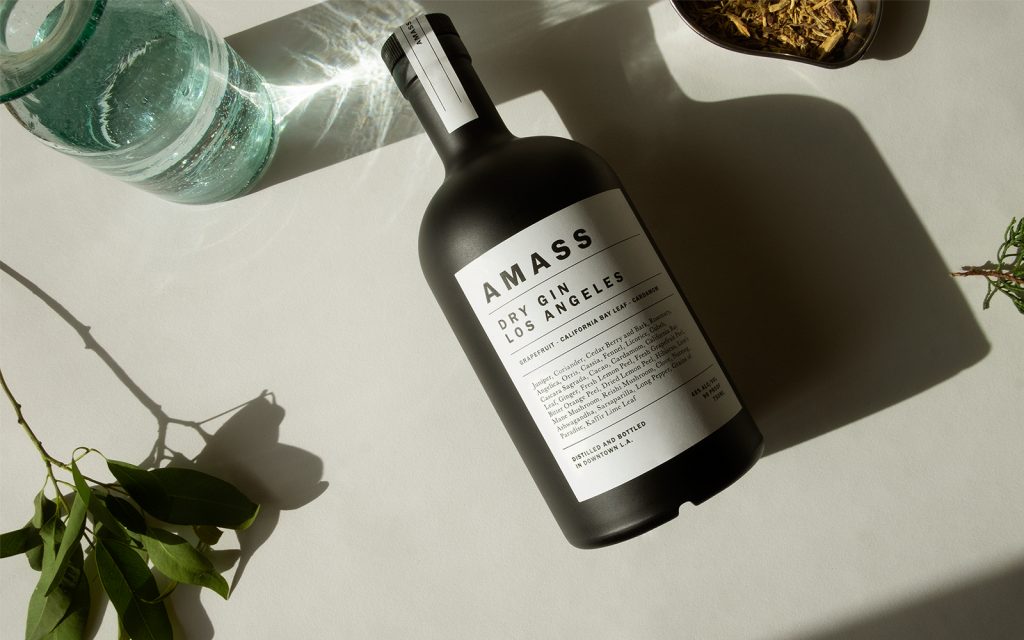Bombay Gin’s Laverstoke Mill Distillery
A historic paper mill gets one of the most advanced botanical gardens in the UK

On an average distillery visit, the most impressive fact tends to be that all the liquor pertaining to the brand (or many brands) has been created exactly where you are standing. While this is true of Bombay Gin‘s Laverstoke Mill Distillery, there’s far more at play. We toured the active production facility and visitor center and were taken aback—not only by the renovated paper mill with roots dating back to the year 903 CE and its hyper-modern glass greenhouse, but also by its continued developments regarding cyclical energy sustainability. It’s a well-considered place of wonder that also happens to produce every drop of Bombay’s product line.

In the town of Laverstoke (in Hampshire, England), the first documentation of a working mill at this site dates back to 1086—over 100 years after some form of construction took place on the grounds. What began as a corn mill would shift to an acclaimed paper mill in the 1700s. When touring the site today, it’s the brick and stone of this era—the Portal Mill—that play the most prominent design influence. Set along the River Test, a clean flowing chalk-stream lending the entire area a wetland aura while also powering parts of the distillery, a visit here is much like stepping back in time. The land is both a conservation area and a recognized Site of Special Scientific Interest. Nature envelops the distillery, and the aged brick sheathes the modern equipment held within.

And as a centerpiece, design firm Heatherwick Studios (helmed by the imaginative English designer Thomas Heatherwick) adorned the facility with a botanical greenhouse unlike any other. The glass shell begins at the river and extends skyward before twisting into the bricks behind it. Inside, 10 botanical varieties are grown, all of which are found in Bombay—however (because of quantity reasons) these are used more as references for ideation as opposed to distillation. It’s a little micro-climate for exotic plants not known to grow in rural England.

The distillery comes complete with a pristine tasting room, a tour through the history of the brand and an experiential botanicals tour—which outlines the origins of all their ingredients and allows for touching and sniffing individual components. For true cocktail experts, however, the distillery hosts an hour-long gin cocktail masterclass hosted by the brand’s masters. More than being taught, visitors are placed behind the bar to also make what they’ve learned.

Gin is produced 24 hours a day on site, 355 days a year. And the handful of people working there are visible on the tour. This is important to Master Distiller Nik Fordham, as he tells CH, “Some of the things that I hear are that some of the big producers do not have the same level of craft—I do not like the word craft because it reminds me of needlework. For me it is craftsmanship, but it is the people who make the products. It’s the care and the passion and the intensity going into every batch. I ask people to come and talk to me and see me here. Every single batch we make is done by hand. It’s sensory and done by the nose, as well. It’s people defining it. We have one of the most sophisticated control systems but what it does is provide the information that allows us to make those decisions. It does not make the decisions for us.” And in turn, a tour reveals that all the botanicals are reviewed and then measured by hand per batch, before going into their signature “Vapour Infusion” process.

Senior Brand Ambassador Sam Carter, who is more than just a wealth of knowledge on gin variations globally and seasonal cocktail variations (he was also a voice in the development and production of Bombay’s most luxuriant iteration Star of Bombay) explains that the entire Bombay range falls within the London Dry category. That means it is just spirit, botanicals and water. “Spirit is basically like a sponge to flavor,” he explains. “And it is your blank canvas to paint your profile with the botanicals. We’ve got four gins within our range. They’re all London Dry, single-fold and vapor-infused.” Their vapor process (which dates back to 1831) is visible on-site, and means the botanicals aren’t boiled in the still. Instead, they’re held about 35 feet in the air, in a perforated basket. The grain spirit vaporizes and passes through an infuser basket before condensing. It’s effective and traditional—and matches the distillery within which it is housed.

The botanicals are then dried and burned with sustainably sourced wood-chips in a biomass boiler, which also provides energy to the facility, much like the hydro-electric turbine in the river. Following this, the ash left over is sent to fertilize local farms. The facility also harvests rainwater. Even the restoration of the structure employed recovered brick and roof tiling. It’s a respectable balance of the past and present. And yet, most important of all: this is a distillery experience unlike any other in the midst of a distillery construction boom.
Visitors can tour Laverstoke Mill Distillery Monday through Thursday, from April to September and Friday though Sunday, from October to March. Cost of admission is £15 and includes a complimentary drink. Laverstoke Mill is located on London Road, Whitchurch, United Kingdom—about an hour’s drive outside of London.
Images by David Graver












